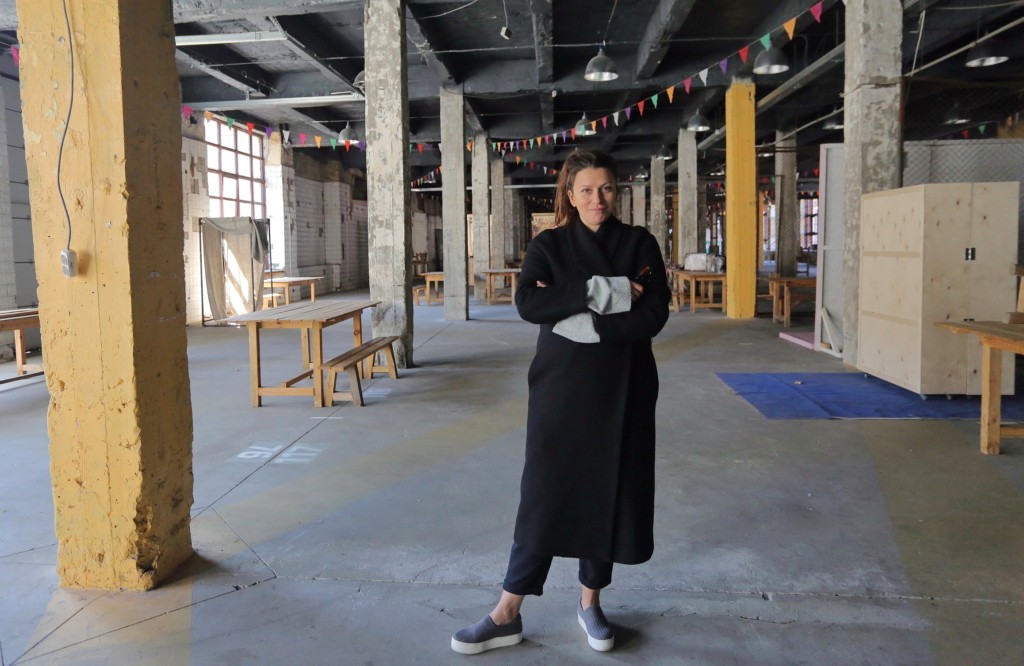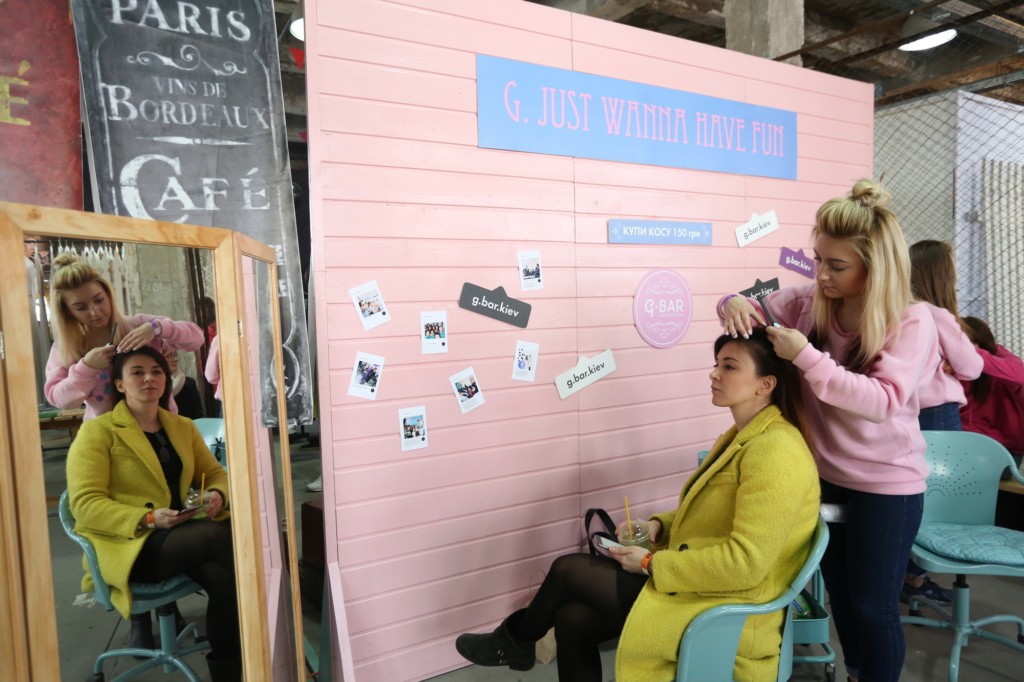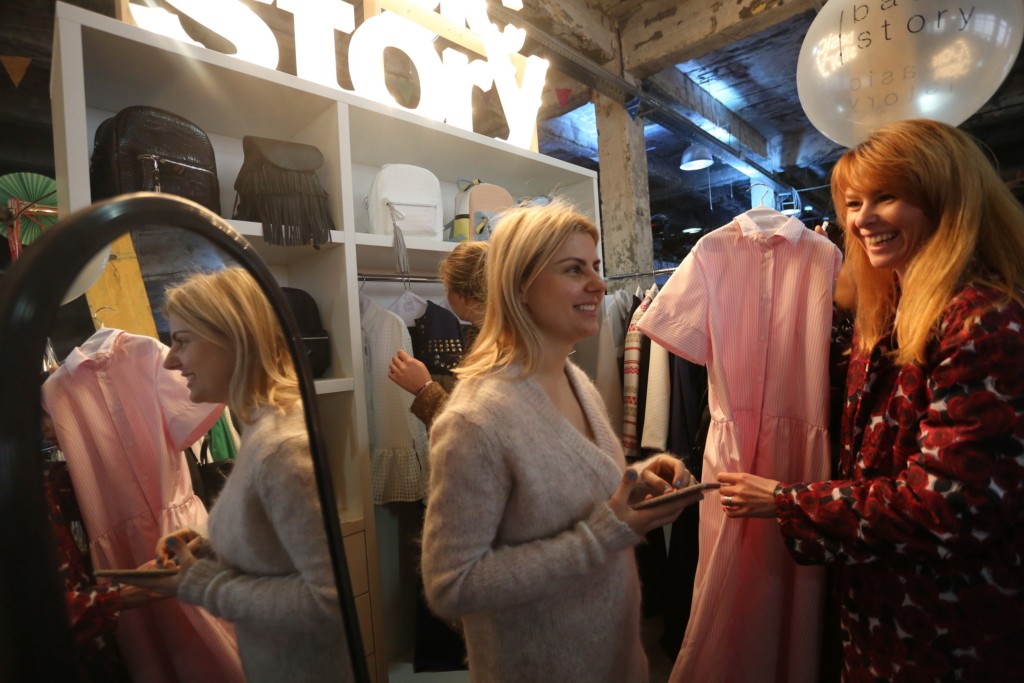When Alyona Gudkova decided to go in for charity three years ago, she wanted to do something fun, and different from just asking people to donate money. Inspired by charity flea markets all over the world, she created her own — and it turned out to be a success.
Gudkova is the founder of Kurazh Bazar (Market of Drive), the biggest Ukrainian charity flea market held monthly at the Platforma Art Factory, where visitors can find both used and brand new clothes, shoes, furniture, accessories, toys and many other vintage or just unusual things. Every time it is held, Kurazh Bazar attracts around 400 manufacturers and those who sell used things, as well as up to 12,000 visitors.
Part of the money earned at each market goes to the Ukrainian charity funds that help children and elderly people. Gudkova said that Kurazh Bazar has already collected Hr 2.6 million, or nearly $97,000, for charity.
“It’s a cool method to raise money, because you don’t have to ask people to donate directly,” Gudkova said.

Alyona Gudkova, a founder of Kurazh Bazar flea market, poses at Platforma Art Factory where the market takes place. (Anastasia Vlasova)
Gudkova’s markets emerged in the wake of patriotism and volunteer charity projects in 2014, after Russia seized the Crimean Peninsula and unleashed its war in eastern Ukraine. At that time, Gudkova had been donating money, food and clothes to the military hospital in Kyiv, but she also wanted to help children in need.
Gudkova, who was at that time an events manager, launched a charity market called The New Old, all revenues from which went to charity. She then asked the people who came to sell things at her market to donate as much money as they could. However, she was disappointed: When at the end of the day she opened the envelopes with what was supposed to be donations, she found pieces of paper instead of money in some of them.
After a couple of such incidents, Gudkova introduced a fixed fee for the market’s participants. The move helped to boost the market’s income significantly.
Soon in the same year, The New Old market transformed into Kurazh Bazar, becoming commercially oriented. The new financial approach allowed Gudkova to quit her job and concentrate on the markets. However, all of the revenues from the June market every year go to charity.
Kurazh Bazar allocates money to several charity funds that are considered reliable, such as the international charity fund Tabletochki, or Pills, which helps children with cancer. The money also goes to help children with heart disease, to purchase equipment to support the breathing of preterm babies, to buy lunches for elderly people, and to pay for the rebuilding of a school in the war-torn eastern city of Sloviansk.

A woman has her hair done at Kurzh Bazar flea market at Platforma Art Factory in Kyiv. (Anastasia Vlasova)
Each participant pays Hr 400 to be able to sell used things, or Hr 2,200 to sell new items. Gudkova said that initially she had set a much higher price for local brands that wanted to sell their products at the market, because she expected it to be an actual flea market with used things only, but the demand for selling spaces from the producers of new goods remained high.
The entrance fee for the visitors is Hr 50, but entrance is free for people with disabilities, retirees and children.
Celebrities sell
Kurazh Bazar markets have attracted a lot Ukrainian celebrities, including Crimean Tatar singer Jamala, who won the Eurovision Song Contest in 2016, businessmen Garick Korogodsky, designer Anna October, and Yevhen Halych, a leader of rock band O. Torvald, which will represent Ukraine at this year’s Eurovision.
Gudkova said that people tend to come back for a market after they’ve visited it once. As many as 40 brands have already bought a market resident’s title, which guarantees a place for them at each market for a year.
According to Gudkova, celebrities often sell their cars at her market: O. Torvald’s front man Halych sold his father’s old car there for Hr 60,000.
Among the most unusual things ever sold at Kurazh Bazar, Gudkova recalls the stuffed ostrich dummy businessman Korogodsky sold to a Ukrainian video production team. Afterward, Gudkova saw it in the music videos of several Ukrainian bands.

Women examine clothes at Kurazh Bazar flea market held every month at Platforma Art Factory on a left bank. (Anastasia Vlasova)
Another memorable item was a collection of the vintage erotic magazines from 1970s, which was snapped up almost immediately, despite having a high price.
Despite there being a lot of curious goods on offer, Gudkova said that people come to her markets more to hang out with friends and participate in other activities available at Kurazh Bazar. Apart from the market itself, visitors can enjoy live music performances, exercise at the sports ground, eat at the food court, take pictures in the photo zone, and attend various master classes.
Gudkova said that for her team the most important task was to make visitors feel welcome at the market, and she believes they’ve succeeded.
“One guy once told me that what he loves the most at Kurazh Bazar markets was that you didn’t feel shy about going there alone,” she said. “That’s what I think is the most important and the hardest thing to create — a light, friendly atmosphere.”
This April’s Kurazh Bazar will be dedicated to handmade products and workshops. Market visitors will be able to try their hands at various kinds of crafts, including embroidery and even designing hats for dogs.
Kurazh Bazar. April 22–23. 11 a. m. — 9 p. m. Art Factory Platforma (1 Bilomorska St.) Hr 50, free for people with disabilities, retirees, and children.
